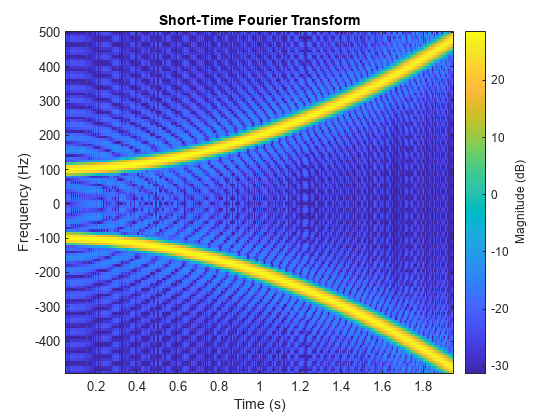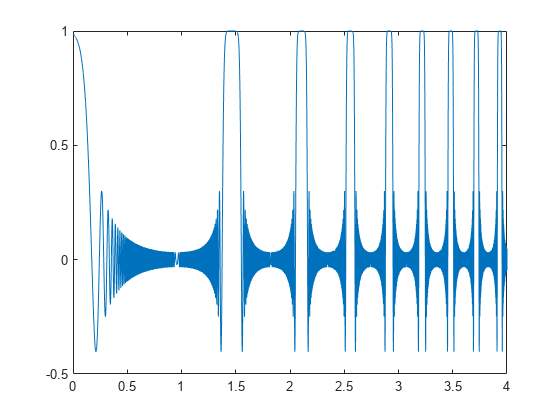Main Content
stft
Short-time Fourier transform
Syntax
Description
s= stft(___,Name,Value)
stft(___)with no output arguments plots the magnitude of the STFT in the current figure window.
Examples
Input Arguments
Output Arguments
More About
References
[1] Mitra, Sanjit K.Digital Signal Processing: A Computer-Based Approach.第二版。纽约:麦格劳-希尔,2001年。
[2] Sharpe, Bruce.Invertibility of Overlap-Add Processing.https://gauss256.github.io/blog/cola.html, accessed July 2019.
[3] Smith, Julius Orion.Spectral Audio Signal Processing.https://ccrma.stanford.edu/~jos/sasp/, online book, 2011 edition, accessed Nov 2018.
Extended Capabilities
Introduced in R2019a




![Figure contains 3 axes. Axes 1 with title 'onesided': [0.000, 2.500] kHz contains an object of type image. Axes 2 with title 'twosided': [0.000, 4.975] kHz contains an object of type image. Axes 3 with title 'centered': [-2.475, 2.500] kHz contains an object of type image.](http://www.tianjin-qmedu.com/help/examples/signal/win64/STFTFrequencyRangesExample_02.png)
![Figure contains 3 axes. Axes 1 with title 'onesided': [0.000, 2.488] kHz contains an object of type image. Axes 2 with title 'twosided': [0.000, 4.975] kHz contains an object of type image. Axes 3 with title 'centered': [-2.488, 2.488] kHz contains an object of type image.](http://www.tianjin-qmedu.com/help/examples/signal/win64/STFTFrequencyRangesExample_03.png)





